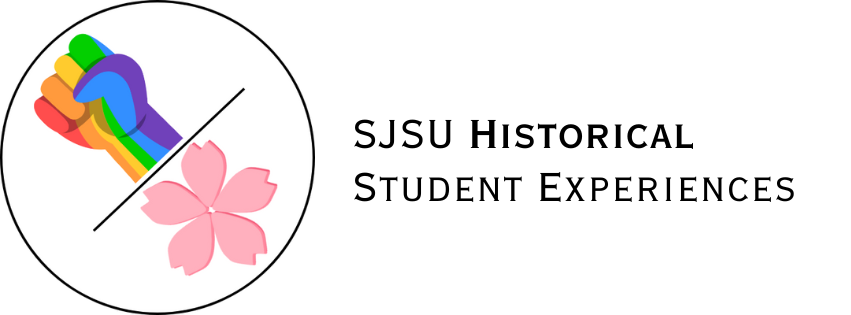SJSU Student Experience Before Two Major Historical Crises
About
Archives in Conversation is a project completed by a group of students for the Intro to Digital Humanities course at San Jose State University in the Spring semester of 2024. This project brings data from the SJSU archives into a new format, allowing you to explore and interact with it through timelines! Our two timelines pull data from the SJSU and SJPL archives. As Digital Humanities students, we hope to make this information accessible and equitable for everyone. In terms of DH principles, this project would connect to being tactical to meet goals, the agency of interactive tools, and the tactic of tracing (Disalvo). When practicing DH, we need to be tactical (utilize different tactics) in order to meet certain goals. In terms of this project, we will need to recover certain histories, be inclusive in our representation, and look for ways to challenge social systems. Through the takeaways of our course, we learned the importance of interaction and the agency that it provides (Murray, JH. 2016). This can involve encountering information differently or connecting to people differently with source material. In an interactive timeline, the viewer can choose what information to observe and explore it with their own sense of direction. They can also encounter information differently, allowing for variability in how they conceptualize it.
Comparing and Contrasting
Archives in Conversation aims to compare archival subjects in order to create a conversation about the historical experiences of two marginalized communities at SJSU. The SJSU Japanese Student Experience Before WW2 and the SJSU Student Experience Before AIDS connect to one another because both follow major historical events that impacted students at SJSU. Because of our proximity to geographical hotspots related to both events, SJSU has a unique experience with both. San Jose had a prominent Japanese population in the 1930s, as well as a "exclusion camp" on the SJSU campus and a close proximity to restricted areas for Japanese Americans. SJSU also stands near San Francisco and is historically a major hotspot for "Gay" culture across the nation. Both the timelines and their events allow us to understand the history of these cultures at SJSU and give us an oppurtunity to reflect on how the SJSU students that came before us shaped our campus life of today.
We want to stress, however, the importance of the differences between these two timelines and what they represent. The systematic incarceration of Japanese Americans and the historic anti-gay sentiment in America both work to oppress, but the groups they oppress have had very different circumstances. The oppression based on race and ethnicity is not the same as the oppression based on sexuality and gender. Not only do these events take place in different eras, but the experiences of both groups differ in many ways that are still important to keep in mind. Japanese students were not able to hide their ethnic identities, making their experiences incredibly different.
Acknowledgments
As Digital Humanities students, we understand that historical sources can often be biased. Articles from the Spartan Daily were written by Journalism students, and often do not include first-hand accounts without commentary by the many editors. When collecting data, we focused our energy on finding articles that used quotes directly from members of each marginalized community. Still, many articles are journalistic accounts written by students outside of these communities. We want readers to take these biases in mind when reading and exploring the timelines.


